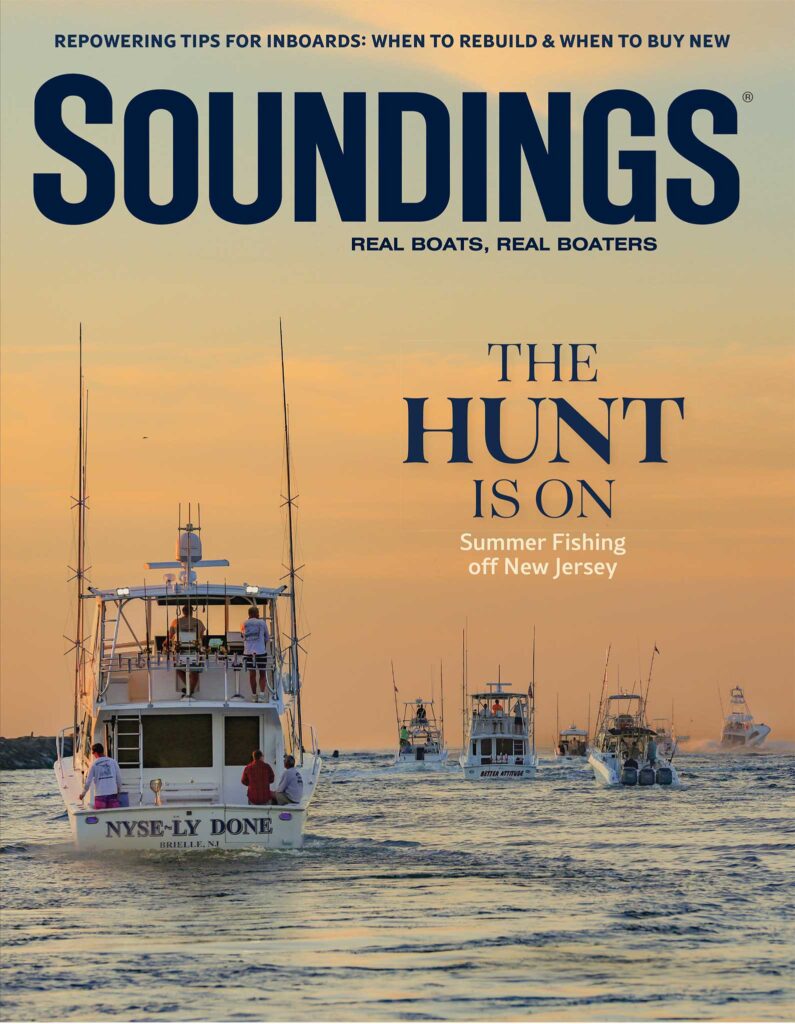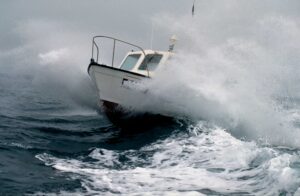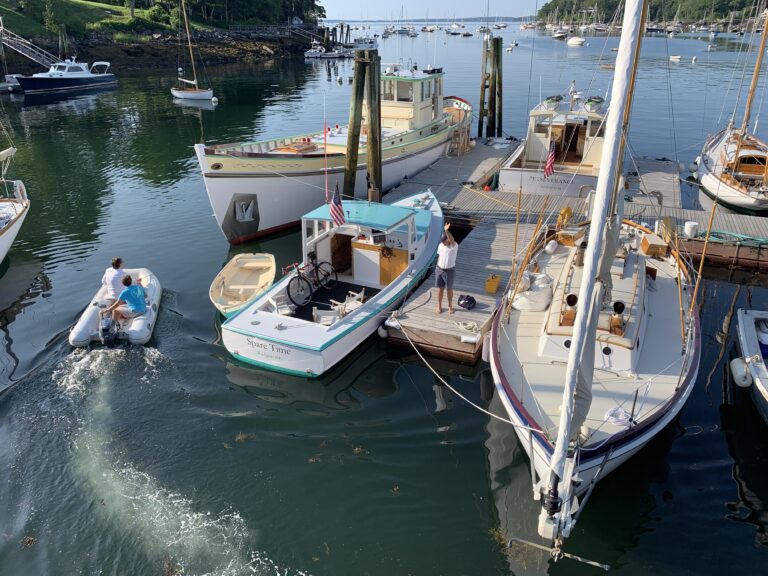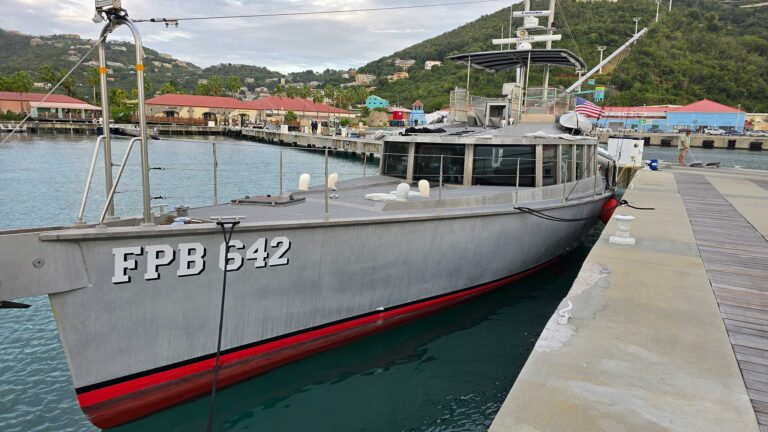Autopilots are highly advanced navigational tools. A good unit is obedient and unwavering in steering the intended course without judgement. That makes it incumbent on the boat’s operator to be a vigilant supervisor and to guard against complacency. We need to stay knowledgeable about autopilot efficiency and its limitations under varying conditions
There have been many autopilot incidents over the years. Accidents and groundings occur because there is simply no substitute for keeping a good lookout and executing a safe voyage plan. Monitoring the performance of the autopilot and having the common sense to know when not to use it are just as important. There are plenty of YouTube videos that show boats being mowed down by other boats in flat water and perfect visibility. We watch them in horror, while asking ourselves, “How could that even happen?”
Leaving the helm unattended without a dedicated lookout is the most common cause of autopilot collisions. While operating on autopilot in Florida, a 60-foot cabin cruiser struck two fishermen at anchor in a 19-foot center console. According to the accident report, the powerboat “ramped over” the anchored boat, killing one person and injuring the other. In another incident, a vessel on autopilot collided with a fishing boat off the coast of New Jersey, killing two of the three people aboard. These are just two of the reported tragedies in the past couple of years, and each underscores the importance of maintaining a good lookout. It’s the law.
Keep speed in mind when you are making autopilot judgements. If you are traveling at 10 knots and meeting another vessel on a reciprocal course traveling at 20 knots, you are closing in on each other at 30 knots. You must be aware of relative speed. I cannot emphasize that enough, particularly if you are short on crew and have to leave the bridge or cockpit to check on something.
We can learn a lot from a 2018 case detailed by the National Transportation Safety Board in the Gulf of Mexico. A high-speed collision occurred in perfect daylight visibility when a recreational sportfishing boat ran broadside into another vessel during a tournament. When returning to port at 28 knots to weigh in a marlin, the captain of the sportfisherman left the flybridge with the boat on
autopilot and the radar set on a 6-mile scale. The captain said he left to do an engine check, but he testified that he also swung by the salon to talk with the boat’s owner about the marlin. He said that while talking, he saw the tip of an outrigger appear in the starboard window. Immediately, the two boats collided. Prize fish or not, don’t allow yourself to get distracted from watching the horizon. If you want to go below while on autopilot, call someone to relieve you.
Groundings can be caused by autopilot malfunctioning. The control head of the autopilot takes its input reading from a dedicated fluxgate compass in most yachts. Pay strict attention to the manufacturer’s recommendations about placement of the fluxgate compass, and then consider that area of the boat as off-limits to metallic objects that may cause interference. I was on a passage once, motoring peaceably along on autopilot, when the boat abruptly swung to port. It turned out that someone returned the toolbox to the wrong location, right next to the fluxgate, causing the heading to veer off. I’ve always been trained to switch to hand steering whenever passing under a bridge or when in enclosed or crowded waters for this very reason. An abrupt heading alteration could put you on a bank, ledge, structure or another vessel in a heartbeat.
An autopilot could gradually stray off course. Prudent seamanship dictates constant monitoring of the vessel’s position by as many means as possible. Check to ensure the autopilot is indeed steering the intended course by comparing different means of position fixing and compass headings. Also, an autopilot accident can easily occur because the helmsman is more involved in fiddling with electronics screens than paying attention to where the boat is headed. Autopilots deserve respect and caution.
Most captains I know have this firm autopilot rule: Never place a waypoint directly on a hard target, such as a buoy or beacon. With GPS accuracy being what it is today, there is the possibility of an inattentive watch stander hitting the actual destination. Better to overshoot a waypoint than collide with one. Most of us have read about the consequences of a watch stander who fell asleep while the autopilot steered obediently into the night. You might consider setting up the audible waypoint alarm on your GPS.
It’s imperative to ensure the course to steer doesn’t pass over anything hazardous before allowing the autopilot to steer toward a waypoint. In 2014, the Volvo Ocean Race yacht Team Vestas, doing 19 knots, crashed into an off-lying shoal near Mauritius in the Indian Ocean. “I’m really disappointed of course,” said the skipper after being rescued. An investigation revealed that the chart scale in use did not show the shallow reef directly on their course line. When laying out the voyage or leg to be steered, zoom in on electronic charts to show sufficient details of bottom features.
While voyaging on autopilot, a two-person double-check is a good habit to cultivate when the watch is changing. The person coming on watch should scan ahead over the course to be steered to check for any hazards and to confirm the next waypoint. The watch stander getting relieved should do the same and take the time to point out any upcoming eventful items or course changes. This is the time to discuss the steering performance in general.
Rough sea conditions can have adverse effects on the performance of an autopilot. Understand the programmed settings that influence the performance of your autopilot, such as rate of turn, rudder limits, weather dampening and off-course parameters. Make sure your crew knows how to operate the gear. In particular, all crew should know how to switch quickly from autopilot mode to manual steering.
The use of an autopilot is not recommended when navigating in areas with high traffic density. The autopilot may not be efficient enough to turn the vessel if swift maneuvering is required to avoid a collision.
Autopilots often steer a more efficient course than humans, lessen fatigue, offer a brief break from the responsibilities of the helm and promote a more efficient lookout. When used prudently, they allow our mental focus to shift to radar and chartplotter screens, improve fuel economy and reduce rudder strain. But they have limitations. Monitor the performance of your equipment, and don’t take anything for granted. Even though it can feel like an autopilot is another member of the crew, there is no substitute for a vigilant human lookout at all times.
KEY TAKEAWAYS
- Stay Vigilant at the Helm: Autopilots can steer accurately, but accidents often happen when operators leave the helm without a proper lookout. Always monitor the system and your surroundings.
- Watch for Interference and Malfunctions: Keep metallic objects away from the autopilot compass and be ready to switch to manual steering if needed.
- Use Navigation Tools Wisely: Avoid placing waypoints directly on buoys or hazards, and zoom in on charts to ensure a safe route. Enable alarms and double-check upcoming waypoints with a second person when possible.
- Understand Limitations: In rough seas or busy waters, autopilots may not respond quickly enough. Make sure all crew know how to disengage the system and take manual control.
This article was first published in the April 2021 issue.










